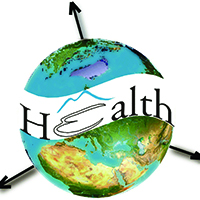There is more to satellite imagery than meets the eye

Published: 31 May 2022
Abstract Views: 2095
PDF: 400
HTML: 19
HTML: 19
Publisher's note
All claims expressed in this article are solely those of the authors and do not necessarily represent those of their affiliated organizations, or those of the publisher, the editors and the reviewers. Any product that may be evaluated in this article or claim that may be made by its manufacturer is not guaranteed or endorsed by the publisher.
All claims expressed in this article are solely those of the authors and do not necessarily represent those of their affiliated organizations, or those of the publisher, the editors and the reviewers. Any product that may be evaluated in this article or claim that may be made by its manufacturer is not guaranteed or endorsed by the publisher.
Similar Articles
- Mohamed R. Habib, Yun-Hai Guo, Shan Lv, Wen-Biao Gu, Xiao-Heng Li, Xiao-Nong Zhou, Predicting the spatial distribution of Biomphalaria straminea, a potential intermediate host for Schistosoma mansoni, in China , Geospatial Health: Vol. 11 No. 3 (2016)
- Patrick Spets, Karin Ebert, Patrik Dinnétz, Spatial analysis of antimicrobial resistance in the environment. A systematic review , Geospatial Health: Vol. 18 No. 1 (2023)
- Roghieh Ramezankhani, Nooshin Sajjadi, Roya Nezakati Esmaeilzadeh, Seyed Ali Jozi, Mohammad Reza Shirzadi, Application of decision tree for prediction of cutaneous leishmaniasis incidence based on environmental and topographic factors in Isfahan Province, Iran , Geospatial Health: Vol. 13 No. 1 (2018)
- Dustin T. Duncan, Ryan R. Ruff, Basile Chaix, Seann D. Regan, James H. Williams, Joseph Ravenell, Marie A. Bragg, Gbenga Ogedegbe, Brian Elbel, Perceived spatial stigma, body mass index and blood pressure: a global positioning system study among low-income housing residents in New York City , Geospatial Health: Vol. 11 No. 2 (2016)
- Amornrat Luenam, Nattapong Puttanapong, Modelling and analyzing spatial clusters of leptospirosis based on satellite-generated measurements of environmental factors in Thailand during 2013-2015 , Geospatial Health: Vol. 15 No. 2 (2020)
- Marina Takane, Shizu Yabe, Yumiko Tateshita, Yusuke Kobayashi, Akihiko Hino, Kazuo Isono, Hiromasa Okayasu, Ousmane M. Diop, Takeo Tadono, Satellite imagery technology in public health: analysis of site catchment areas for assessment of poliovirus circulation in Nigeria and Niger , Geospatial Health: Vol. 11 No. 3 (2016)
- Yaqi Wang, Zhiwei Wan, Spatial autocorrelation and stratified heterogeneity in the evaluation of breast cancer risk inequity and socioeconomic factors analysis in China: Evidence from Nanchang, Jiangxi Province , Geospatial Health: Vol. 17 No. 1 (2022)
- Adrian M. Tompkins, Nicky McCreesh, Migration statistics relevant for malaria transmission in Senegal derived from mobile phone data and used in an agent-based migration model , Geospatial Health: Vol. 11 No. s1 (2016): HEALTHY FUTURES
- Vasna Joshua, Kamaraj Pattabi, Yuvaraj Jeyaraman, Prabhdeep Kaur, Tarun Bhatnagar, Suresh Arunachalam, Sabarinathan Ramasamy, Venkateshprabhu Janagaraj, Manoj V Murhekar, Comparison of complete and spatial sampling frames for estimation of the prevalence of hypertension and diabetes mellitus , Geospatial Health: Vol. 17 No. 2 (2022)
- Matthew Tuson, Matthew Yap, David Whyatt, Investigating local variation in disease rates within high-rate regions identified using smoothing , Geospatial Health: Vol. 18 No. 1 (2023)
<< < 1 2 3 4 5 6 7 8 9 10 > >>
You may also start an advanced similarity search for this article.

 https://doi.org/10.4081/gh.2022.1106
https://doi.org/10.4081/gh.2022.1106





